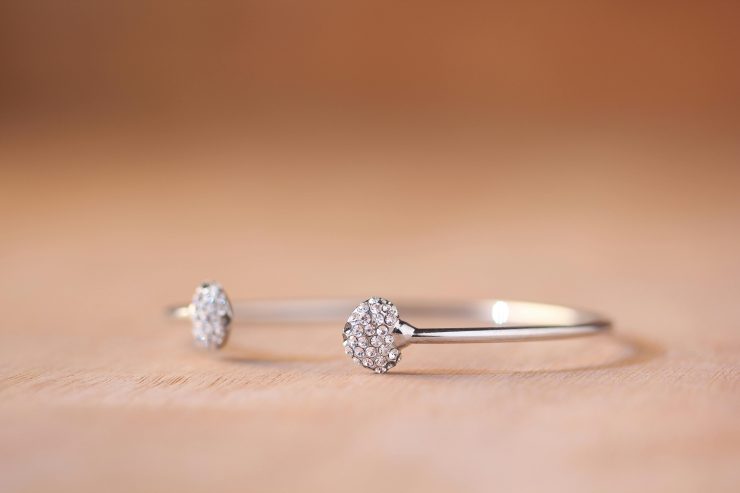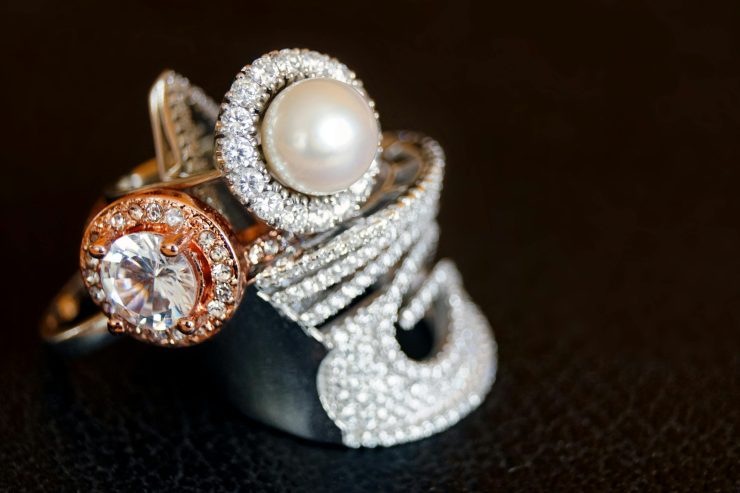Understanding Your Target Audience
Effectively marketing natural diamonds begins with a thorough understanding of your target audience. Different buyers may be motivated by different values—some may prioritize investment potential, while others are more focused on emotional or aesthetic value. For instance, luxury buyers often value exclusivity, ethical sourcing, and certification, whereas practical investors might care more about carat weight, clarity, and resale potential. Identifying whether your potential clients include engaged couples, collectors, retailers, or institutional investors helps determine your messaging tone, platform selection, and even the packaging of your offer. Additionally, demographic factors like age, income level, and geographic location influence purchasing behavior. For example, affluent buyers in metropolitan cities might prefer boutique showrooms or white-glove service, while online buyers might prioritize competitive pricing and convenience. Building buyer personas can help you refine your outreach and advertising materials to reflect your target group’s specific preferences. Tailoring your approach is essential; a one-size-fits-all marketing strategy often underperforms in a highly personalized luxury market like natural diamonds.

Crafting a Unique Value Proposition (UVP)
A clear and compelling Unique Value Proposition (UVP) is a cornerstone of successful diamond marketing. The UVP should articulate what makes your natural diamonds distinctive and why a buyer should choose your product over others. This might include factors such as origin (e.g., ethically sourced from a specific region), certification (e.g., GIA, AGS), craftsmanship, rarity, or provenance. Unlike synthetic or lab-grown diamonds, natural diamonds often carry historical and emotional weight, which can be emphasized in storytelling. A UVP can also extend into value-added services like custom settings, lifetime warranties, or appraisal services. For instance, offering complimentary grading reports or consultations with a gemologist could distinguish your offering from generic retailers. Furthermore, emphasizing transparency and ethical sourcing could appeal to socially conscious consumers, while highlighting the investment potential of rare stones might resonate with financially motivated buyers. Every piece of marketing collateral—from website text to in-store signage—should reinforce your UVP to instill trust and boost conversions.
Leveraging Digital Marketing Channels
In today’s market, digital channels are crucial for reaching a broad and diverse audience of diamond buyers. Search engine optimization (SEO) is essential to ensure your product listings and website content appear prominently when potential customers search for related keywords. This includes optimizing for terms like “buy natural diamonds,” “GIA certified diamonds,” or “ethical diamond investment.” Pay-per-click (PPC) advertising can supplement organic search by targeting high-intent users who are actively looking to make a purchase. Social media platforms such as Instagram and Pinterest are particularly valuable for showcasing high-resolution images of your diamonds, telling the story behind each piece, and engaging with potential buyers through interactive features. Email marketing is another powerful tool, especially for nurturing leads and offering exclusive promotions or updates on new inventory. Additionally, online marketplaces and jewelry-specific platforms like 1stDibs or The RealReal offer curated environments where luxury buyers search for high-end items. Utilizing multiple digital channels in a coordinated strategy enhances your brand visibility and helps funnel interested prospects toward a purchase.
Building an Engaging and Trustworthy Online Presence
For diamond sellers, a trustworthy and visually engaging online presence is non-negotiable. Your website should be professionally designed, mobile-optimized, and easy to navigate, with fast loading times and secure checkout options. Detailed product listings with high-resolution images, 360-degree views, and complete certification documentation are critical for building buyer confidence. Incorporating storytelling elements—such as the journey of the diamond from mine to market—can enhance the emotional appeal and perceived value of the gem. Testimonials, third-party reviews, and affiliations with reputable gemological institutes also help validate your credibility. Live chat features or virtual consultations with gemologists can provide real-time support, replicating the personalized service traditionally found in high-end retail stores. Additionally, having a strong presence on Google My Business and other local directories improves visibility for nearby buyers searching for reputable diamond sellers. Trust signals like SSL certification, return policies, and satisfaction guarantees further reduce purchase hesitation and are vital for converting browsers into buyers in a high-stakes luxury market.
Content Marketing and Educational Outreach
Establishing authority through content marketing is a powerful way to build trust with potential diamond buyers. Regular blog posts, videos, and social media updates that educate readers about diamond grading, market trends, and ethical sourcing practices not only position you as a knowledgeable industry player but also attract organic search traffic. Educational content could include guides such as “How to Read a GIA Report,” “The 4Cs of Diamonds Explained,” or “Why Natural Diamonds Hold Long-Term Value.” Hosting webinars or live Q&A sessions on platforms like Instagram Live or YouTube can also increase engagement and allow prospective buyers to ask questions directly. By demystifying the buying process, you lower barriers to entry for new customers while reinforcing the value and authenticity of your offerings. This strategy is especially effective with first-time buyers who may feel intimidated by the complexity and price point of natural diamonds. Content marketing also creates opportunities for inbound links and media mentions, which further enhance your brand’s authority and search rankings.

Partnering with Influencers and Industry Professionals
Influencer marketing has become an increasingly powerful strategy for luxury products, including natural diamonds. Collaborating with social media influencers, fashion bloggers, or jewelry experts who align with your brand image can expose your offerings to new and engaged audiences. When selecting influencers, it is important to prioritize authenticity, relevance, and follower engagement over sheer follower count. Micro-influencers in the luxury, bridal, or ethical fashion niches often have more dedicated followers who are genuinely interested in their recommendations. Influencers can create unboxing videos, styling content, or educational posts that highlight the uniqueness of your diamonds, and many will also repurpose this content across various platforms, maximizing visibility. Additionally, partnerships with industry professionals such as fashion designers, gemologists, or auctioneers can boost credibility. These collaborations might include guest blog contributions, co-hosted events, or social media takeovers. Influencers and professionals lend a human face to your brand and bridge the gap between the product and the consumer, making your diamonds more relatable and desirable.
Building Strategic Partnerships and Retail Collaborations
Forging strategic partnerships is another effective route to marketing natural diamonds. Working with complementary businesses—such as high-end watch retailers, bespoke tailors, wedding planners, or luxury event organizers—can introduce your offerings to an audience already inclined toward premium goods and services. For example, offering exclusive diamond showcases at luxury bridal boutiques or co-branding gift packages with premium lifestyle brands can enhance your exposure and perceived value. Retail collaborations also allow you to place your diamonds in curated spaces where buyers can see them in person, which may be especially appealing to clients wary of online-only purchases. Joint marketing campaigns, including cross-promotional email newsletters, Instagram shout-outs, or co-hosted events, can generate significant engagement and lead flow. These relationships can be particularly valuable during seasonal peaks such as the holiday or engagement season. Moreover, associating your brand with established names in luxury helps reinforce its exclusivity and prestige in the eyes of discerning buyers.
Using Offline Marketing for High-Value Sales
Despite the growth of digital marketing, offline strategies remain highly relevant, especially for high-ticket luxury items like natural diamonds. Hosting private viewings, pop-up exhibitions, or invitation-only trunk shows allows potential buyers to experience your diamonds in an intimate, personalized setting. These events can be themed around exclusivity, romance, or investment—depending on your audience—and often include high-touch services such as champagne receptions, personal stylists, or gemology consultations. Additionally, attending or exhibiting at prestigious jewelry shows, auctions, or gemstone trade fairs can place your brand in front of industry insiders and serious collectors. Print advertising in high-end magazines such as Robb Report or Town & Country, as well as sponsorships of charity galas or cultural events, also maintain your brand’s presence in elite circles. Offline marketing provides the tactile, emotional engagement that digital platforms sometimes lack and can help cement your reputation among buyers who value traditional service and interpersonal trust in luxury transactions.
Establishing Brand Consistency Across All Channels
One often overlooked yet crucial strategy in marketing natural diamonds is ensuring consistent branding across all touchpoints. Whether a potential buyer first encounters your business through Instagram, a Google ad, a blog post, or an in-person event, they should receive the same message, tone, and aesthetic. This includes your logo, color palette, tagline, and the language used in product descriptions and customer communications. Consistency fosters trust, enhances recall, and reinforces your unique value proposition. If your brand identity emphasizes timeless elegance and ethical sourcing, that theme should be evident in your visuals, storytelling, and even customer service approach. Inconsistencies—such as a luxury-oriented Instagram feed paired with a cluttered, outdated website—can diminish perceived value and deter high-end buyers. Using a unified content calendar, brand guidelines, and customer service script ensures your messaging aligns with your strategic objectives. Strong, consistent branding helps elevate your natural diamonds beyond commodity status, turning them into aspirational, meaningful purchases.
Monitoring Results and Adapting Strategies
An essential but frequently underemphasized part of any marketing plan is performance tracking and strategy optimization. Once your marketing campaigns are live, it is important to monitor key performance indicators (KPIs) such as website traffic, bounce rates, time on page, conversion rates, social engagement, email open rates, and ultimately, sales. Using tools like Google Analytics, Meta Business Suite, and customer relationship management (CRM) platforms allows you to analyze where leads are coming from and which channels provide the highest return on investment. You might find, for instance, that Instagram yields strong engagement but few actual conversions, while educational blog posts drive both traffic and inquiries. These insights allow you to double down on what works and adjust or eliminate underperforming strategies. Continuous optimization ensures your marketing remains cost-effective, competitive, and aligned with evolving buyer behavior. A data-driven approach helps ensure your brand remains agile and that your natural diamonds reach the most motivated, high-value buyers possible.